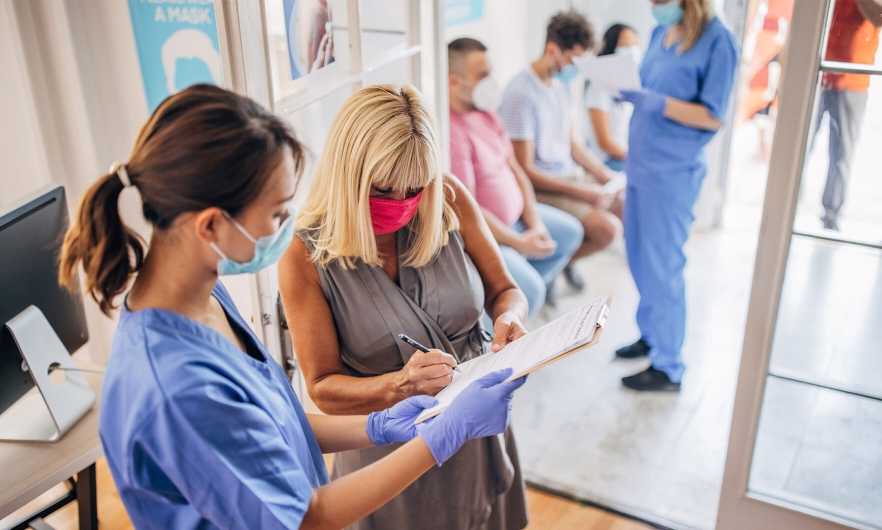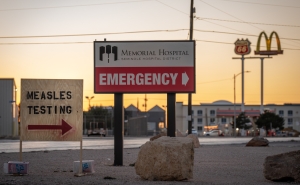
As we enter year three of the pandemic, only 65% of the U.S. population is fully vaccinated against COVID-19. Increasing that number is critical to containing the virus and preventing future surges. We have tools to get us there—including workplace vaccine mandates. While mandates are never the first choice in a public health response, insufficient voluntary vaccination rates can require additional measures.
Vaccine mandates are nothing new in the U.S. In 1777, George Washington famously required his soldiers to be inoculated against smallpox; in 1809, Massachusetts implemented a statewide vaccination mandate against the same disease. Today, all states require certain childhood vaccinations to attend school.
When the Supreme Court ruled in January against an Occupational Health and Safety Administration (OSHA) rule requiring vaccinations at businesses with 100 or more employees, the decision of whether to ensure workplace safety through vaccination mandates was left to employers themselves.
Requiring employees to be vaccinated improves employee health. It helps contain the virus and protect vulnerable populations beyond the workplace. And it makes business sense, too: Fewer employees out sick or dealing with lasting complications means a more productive workforce.
Better Vaccination Rates
The simplest measure of a mandate’s success is whether it gets people vaccinated. Mandates have done this in most cases so far, including in hospital systems, police forces, and airlines, says immunologist Gigi Gronvall, PhD, a senior scholar at the Johns Hopkins Center for Health Security. Rather than being opposed to vaccination, many people simply don’t prioritize it until it’s required. “When it comes to a decision to either get vaccinated or lose one’s job, almost everyone gets vaccinated.”
Gronvall points to numerous media reports during the COVID-19 pandemic about how vaccine mandates rolled out without any large-scale pushback, such as workers quitting en masse. For example, meatpacking giant Tyson Foods announced a vaccine mandate for its 120,000-person workforce in August 2021. By November, 60,500 previously unvaccinated employees had received the shot, bringing the company-wide vaccination rate to 96%.
Compounding Benefits
Higher vaccination rates benefit everyone. Fewer infections mean less disease transmission and fewer deaths. According to David Michaels, PhD, MPH, OSHA assistant secretary for labor during the Obama administration, one notable example is United Airlines, which has about 86,000 employees.
“Earlier in the pandemic, United Airlines was losing one worker a week to COVID,” Michaels said in an interview on Public Health On Call. “Right now, that has stopped happening. There are no more deaths related to COVID among United employees. And while they have, as of [the last week of January], about 3,000 workers infected with omicron, none of them were hospitalized.”
Safety for All
Vaccine mandates can be a tool for workplace safety. Because people spend so much of their time at work, anything that can lower their risk of infection on the job stands to have a big impact on their health.
“Vaccine mandates are being challenged in the courts and lots of people don’t like them,” Gronvall says. “But they do work to get people vaccinated, which we know leads to less disease and risk of death.”
Like requiring employees to be trained to operate dangerous equipment or banning smoking in the workplace, vaccine mandates are an effective tool employers can use to make work environments safe for everyone.
Ending the Pandemic
“I think vaccine mandates should be much more common,” Gronvall says. “They are absolutely important for places where there are vulnerable populations, including nursing homes, prisons, and hospitals.”
As vaccine requirements become more common, convincing more people of the necessity to vaccinate—and keep up with what may become annual boosters—gets easier. That, in turn, will help us to not only protect our most vulnerable neighbors, but eventually turn COVID-19 from pandemic emergency into a manageable endemic disease.
Amy Dusto is a freelance writer based in Chicago. Her work has appeared in Discovery News, Symmetry Magazine, Hopkins Bloomberg Public Health, and Johns Hopkins Arts & Sciences Magazine, among other publications.





